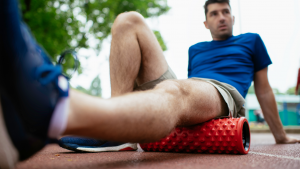No products in the cart.
Power Meters
Investing in the Efficiency of Your Training
By now, you have probably heard of a cycling power meter. With the dramatic decrease in average costs of power meters, they are becoming much more mainstream. What might surprise you is that these devices have been used since the mid-1980’s. Their first public appearance was at the 1988 Olympics in Calgary, Canada where the German National team used SRM’s first crank based system. What then looked more like a medieval torture device (they might still be described as such) was attached to many of the track racers bikes.
Since their early introduction, a great deal has been learned about these devices and how we can better utilize the data that they provide to improve training efficiency. Here are a handful of the ways you will find a power meter can improve your training if you chose to take the next step.
Accurate tracking of improvement – Unlike heart rate with its wide array of variables, power is much more consistent. Where heart rate is your body’s response to the work that has been completed (delayed by up to 60 seconds), power is the actual amount of work that is being created. This work-based response takes factors out of the equation to give more consistent verification of current improvement.
More precise training ranges – For those who have been using heart rate for years, your first workout with a power meter will immediately show you that your workouts just became harder! Why is that you ask? As mentioned previously, heart rate is a response to the work that has been done. With cardiac drift as a factor involved with sustained efforts, you will quickly notice that workload stays consistent but heart rate gradually increases. Remember heart rate is a response to the work you have done — power is the actual work.
Caloric expenditure – You might be ecstatic that you just went out for a ride and your Garmin paired with your heart rate monitor is telling you that you burned 1100 calories. Now, it is time to go out and eat that 22oz steak, drink a bottle of wine or guzzle a bunch of amazing craft beer. It’s the perfect moment to eat that 1100 calorie dessert at your local go to restaurant, right? NOT SO FAST! Pair that same workout with a power meter and you might find that your Garmin has been calculating your calorie burn inaccurately — 150% inaccurately. You’ll be dismayed to find out that you only clocked in at 650 calories in reality. Why the difference? Power measures work done and uses an equation that provides a more accurate gauge of calorie burn.
Gauging extended efforts – For many endurance events like time trials, triathlons, centuries or the popular gravel grinders, effort is everything! Getting from Point A to Point B as quickly and effectively as possible is what ultimately results in optimal performance. With proper training using a cycling power meter, sufficient data can be collected and analyzed to calculate the best effort range for your optimal performance.
Now, the question is what brand do you go with. Our coaches have used many power meters over the years and we feel that several provide great data to help you reach your goals. Consider a Stages Cycling Power meter, a SRM Power meter, Quarq Power meter, or one of the PowerTap line of power meters. They each have their own benefits and drawbacks, but each of these will provide you with great data to improve your accuracy.
Pair your Science of Speed Coaching with a power meter and receive a discount! You’ll receive the highest quality training and the top training devices on the market at a great price.




